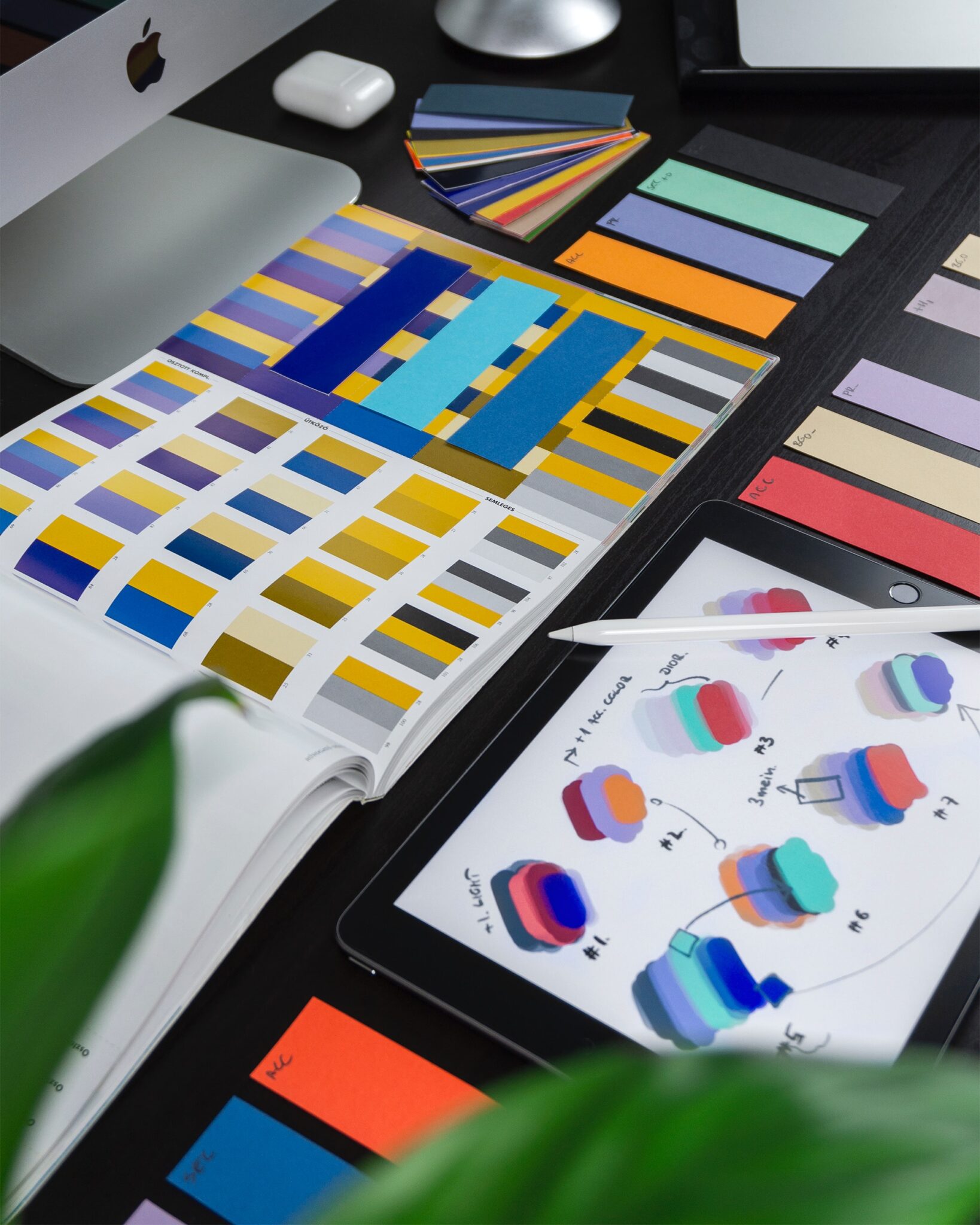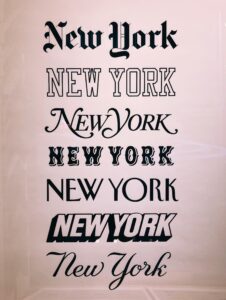
Crafting a Distinctive Logo for Trademark: A Comprehensive Guide
Brief overview of the importance of logos in establishing brand identity
Logos play a pivotal role in shaping a brand’s identity, serving as a visual cornerstone that communicates a company’s values, mission, and personality in a concise manner. A well-crafted logo is more than just a graphic; it’s a powerful symbol that fosters instant recognition and distinguishes a brand from its competitors. Logos contribute to brand recall, invoking trust and loyalty among consumers.
Through consistent use across various platforms, logos become a visual cue, triggering positive associations with the brand. They encapsulate the essence of a business, making it memorable and facilitating a strong emotional connection.
Emphasis on the significance of trademarking logos for legal protection
Trademark registration for logos is a crucial step in safeguarding a brand’s visual identity and business reputation. It provides legal exclusivity, preventing others from using similar designs and protecting against potential infringement. Registration enhances a brand’s credibility, signaling commitment to quality and authenticity. It serves as a valuable asset, bolstering the brand’s market position and fostering consumer trust. With a registered logo, legal recourse becomes more robust in cases of unauthorized use. A federal court presumes the registered trademark is valid.
Creating a logo specifically designed for trademark purposes
When creating a new logo, prioritize simplicity and uniqueness. Craft a distinctive symbol that captures the essence of your brand without unnecessary complexity. Avoid generic elements to ensure a logo that stands out in the market. Conduct thorough research to ensure your design isn’t similar to existing trademarks, reducing the risk of legal conflicts. Opt for a versatile design that scales well across different mediums. Consider consulting with a legal professional to navigate the intricacies of federal trademark laws and ensure your logo is eligible for registration.
Understanding Trademarks
Definition of trademarks and their role in protecting intellectual property
A trademark is a distinctive sign, symbol, logo, name, or any combination thereof, used by a business to identify and distinguish its products or services from those of competitors. A legally protected mark serves as a valuable asset, representing the goodwill and reputation associated with a particular brand. Trademarks can take various forms, including words, slogans, designs, or even distinctive packaging.
Exclusivity and consistent use of a trademark fosters brand recognition and consumer trust, as customers come to associate the trademark with a certain level of quality and consistency.
Trademarks play a crucial role in preventing consumer confusion. Registered trademarks are powerful to stop trademark infringement. They help consumers make informed purchasing decisions by signaling the source of a product or service. Trademarks promote fair competition by ensuring that businesses can distinguish their offerings in the market, encouraging innovation and creativity.
Enforcing trademark rights involves vigilant monitoring and strategic action. Regularly search for potential infringements in the market, both online and offline. Document instances of unauthorized use of federal trademarks meticulously, collecting evidence such as screenshots, dates, and locations. Send cease-and-desist letters to infringers, outlining the violation and demanding corrective action.
If necessary, engage legal counsel to escalate the matter, send a cease and desist letter, potentially filing a lawsuit for trademark infringement. Collaborate with intellectual property offices and customs authorities to curb counterfeiting. Consistent enforcement not only protects the brand but also reinforces the strength and distinctiveness of the trademark, ensuring its continued value in the market.
Overview of logo trademarks and their distinct legal implications
Logo trademarks are visual representations, crucial for brand recognition, and carry distinct legal implications. These graphic symbols or designs serve as unique identifiers, embodying a company’s identity. Registering a logo trademark provides exclusive rights, preventing others from using similar designs in commerce. The legal implications include the ability to enforce these exclusive rights through legal action against infringement. Finding and stopping logo trademark infringement fosters consumer trust and maintains brand integrity.
Importance of a unique and distinctive trademarked logo

A unique and distinctive logo is paramount for successful trademark registration due to its profound impact on brand recognition and legal protection. In the competitive marketplace, a logo serves as the visual face of a brand, embodying its identity and values. When seeking trademark registration, uniqueness is crucial as it sets the brand apart, preventing confusion among consumers and competitors. A distinctive logo strengthens the likelihood of successful registration by meeting the legal requirement of distinctiveness, a key criterion.
Trademark registration provides exclusive rights to use the logo in connection with specific goods or services, offering legal recourse against unauthorized use. It becomes a valuable asset, safeguarding against potential infringement, from use of similar logos, and counterfeiting.
Using a generic logo poses a significant problem as it undermines brand distinctiveness and dilutes market presence. Generic logos lack unique elements, making it challenging for consumers to differentiate a brand from competitors. Generic logos are more prone to imitation, raising the risk of trademark infringement and dilution. Opting for a generic design diminishes the advantages of using a logo, making it harder for a brand to stand out and establish a lasting, memorable presence in the market.
Key Elements of an Effective Trademark Logo
Simplicity and Memorability
Examples of successful trademark logos and their simplicity:
Nike Swoosh: The iconic checkmark conveys motion and success, creating a lasting and globally recognized symbol.
Apple’s Apple: A sleek, bitten apple symbolizes simplicity and innovation, instantly associated with the tech giant’s products.
McDonald’s Golden Arches: The distinctive “M” arches are synonymous with the fast-food brand, globally identified and memorable.
Coca-Cola: The flowing script of the brand’s name and the iconic red color creates a timeless and universally recognizable logo.
Shell: The distinctive shell shape is simple yet powerful, representing the energy company’s global presence.
Google: The playful and colorful lettering of the search engine’s name is instantly associated with its user-friendly approach.
Adidas: The three parallel stripes are a minimalist yet dynamic design, synonymous with the sports apparel brand.
Twitter Bird: The stylized bird silhouette symbolizes freedom, communication, and the essence of the social media platform.
Amazon: The arrow in the Amazon logo, starting from ‘A’ and ending at ‘Z,’ signifies the company’s vast product range and customer satisfaction.
Target: The red bullseye is simple, memorable, and synonymous with the retail giant, emphasizing a focus on hitting the mark for consumers.
How does simplicity aid in recognition and recall?
Simplicity is a cornerstone of effective visual recognition and recall in logo design. A simple design, free from unnecessary complexities, allows for swift comprehension and instant association. The human brain processes uncomplicated shapes and forms more rapidly. Simple logos are easier to remember, making a lasting imprint on the audience’s memory. This straightforwardness fosters brand familiarity, crucial for building trust and loyalty. It can be harder to trademark a logo that is too simple, though.
Distinctiveness and Originality
Uniqueness plays a pivotal role in avoiding trademark conflicts by ensuring a brand’s distinct identity. A unique trademark is less likely to overlap with existing registrations, reducing the risk of confusion in the marketplace. The distinctiveness of a mark enhances its eligibility for trademark registration, strengthening trademark rights. Brands with unique trademarks face fewer challenges from competitors and are better equipped to enforce their intellectual property rights.
 To make a logo stand out from the competition, infuse creativity and originality. Employ unique color schemes, distinctive typography, or unconventional shapes to capture attention. Consider incorporating subtle symbolism that reflects the brand’s essence, fostering a deeper connection. Opt for simplicity, ensuring the logo remains memorable and versatile across platforms. Engage professional designers for a fresh perspective and contemporary aesthetic. Regularly update the logo to stay relevant in dynamic markets. By blending innovation with brand authenticity, a standout logo becomes a powerful tool in differentiating from competitors and leaving a lasting impression on consumers. It is easier to trademark a logo that is unique.
To make a logo stand out from the competition, infuse creativity and originality. Employ unique color schemes, distinctive typography, or unconventional shapes to capture attention. Consider incorporating subtle symbolism that reflects the brand’s essence, fostering a deeper connection. Opt for simplicity, ensuring the logo remains memorable and versatile across platforms. Engage professional designers for a fresh perspective and contemporary aesthetic. Regularly update the logo to stay relevant in dynamic markets. By blending innovation with brand authenticity, a standout logo becomes a powerful tool in differentiating from competitors and leaving a lasting impression on consumers. It is easier to trademark a logo that is unique.
Versatility and Scalability
The adaptability of graphic design across online platforms is paramount for an effective digital presence. Different platforms, from social media to websites, demand varied visual formats and sizes. An adaptable design ensures seamless integration, maintaining brand consistency and professionalism. Responsive graphics enhance user experience, optimizing content for diverse devices and screen sizes. Consistent branding across platforms fosters brand recognition and trust. Moreover, as online trends evolve, adaptable graphic design allows for swift updates, keeping the brand visually contemporary.
Designing a scalable logo across platforms is essential for maintaining brand consistency and recognition, and to trademark a logo. Here are top tips to achieve scalability without compromising essence:
- Simplicity is Key: Keep the design simple, with clear lines and minimal intricate details. This ensures that the logo remains recognizable even when scaled down.
- Vector Graphics: Use vector graphics for your logo. Unlike raster images, vector graphics can be resized without loss of quality, ensuring clarity across various platforms.
- Consider Negative Space: Clever use of negative space enhances scalability. A well-thought-out design allows the logo to remain distinct even when scaled to different sizes.
- Responsive Typography: If your logo includes text, choose a font that is easily readable at various sizes. Consider how the typography scales with the rest of the design.
- Adaptable Color Schemes: Choose a color palette that remains vibrant and impactful across different platforms. Consider variations for light and dark backgrounds.
- Test on Various Platforms: Before finalizing, test your logo on different devices and platforms to ensure it maintains its integrity and legibility.
- Icon and Wordmark Separation: If your logo includes both an icon and a wordmark, ensure they can be used separately without losing brand identity, offering flexibility in placement.
- Responsive Design Principles: Apply principles of responsive design to your logo, ensuring it adapts seamlessly to different screen sizes and resolutions.
- Consistent Proportions: Maintain consistent proportions between different elements of the logo, allowing for balanced scaling.
- Regular Review and Updates: Periodically review your logo’s performance across platforms and make necessary adjustments to keep it modern and effective while preserving its core essence.
Designing the Logo
Research and Conceptualization

Attend industry events, workshops, and conferences to gain firsthand knowledge of evolving trends. Analyze successful rebranding efforts within the industry to discern patterns and innovations. Collaborate with industry experts or consult professional designers with a deep understanding of the specific sector. By amalgamating these diverse sources of information, you can create a logo that not only aligns with current industry aesthetics but positions your brand as a forward-thinking and relevant player in the market.
Brainstorming ideas for creative logos is a dynamic process that involves a combination of individual and group thinking.
Clearly outline the goals and values you want the logo to represent. Understand the brand’s ethos and target audience.
Create mood boards and gather visual inspiration to fuel creativity.
Encourage team members to brainstorm individually. Have each participant jot down their initial ideas without censorship. Bring the team together to share and build upon individual ideas. Foster an open environment where everyone feels comfortable expressing their thoughts.
Use word association games to generate a pool of related terms. This can spark unique and unexpected concepts.
Encourage participants to sketch their ideas, even if they are not professional artists. Sometimes, a simple visual representation can communicate a concept effectively.
Identify common themes and elements in the ideas generated. Combine and refine concepts to create a cohesive and balanced design.
Gather feedback from the team and stakeholders. Iterate on the initial concepts based on constructive input.
Select a few strong concepts and create refined versions. Test the logos in real-world scenarios to ensure they meet the intended impact.
By combining creativity, collaboration, and a structured approach, you can generate diverse and innovative ideas for a creative logo that aligns with the brand’s vision and resonates with the target audience.
Choosing Colors and Fonts
The psychological impact of colors in logo design
The psychological impact of colors in logo design is a nuanced aspect that profoundly influences consumer perceptions and emotional responses. Colors evoke specific feelings and associations, playing a vital role in shaping a brand’s character. Here’s a breakdown of the psychological impact of various colors:
Red:
- Emotions: Passion, energy, excitement.
- Applications: Commonly used by dynamic and energetic brands to evoke urgency and enthusiasm.
Blue:
- Emotions: Trust, reliability, calmness.
- Applications: Frequently employed by tech companies and financial institutions to instill a sense of stability and professionalism.
Green:
- Emotions: Growth, nature, health.
- Applications: Associated with eco-friendly and health-related products, promoting a sense of well-being.
Yellow:
- Emotions: Optimism, warmth, positivity.
- Applications: Often used by brands seeking to convey a sunny and cheerful disposition.
Orange:
- Emotions: Creativity, enthusiasm, vitality.
- Applications: Commonly used by innovative and dynamic brands to create a sense of excitement.
Purple:
- Emotions: Luxury, sophistication, mystery.
- Applications: Often chosen by high-end brands aiming for a sense of exclusivity.
Black:
- Emotions: Elegance, power, sophistication.
- Applications: Frequently utilized by luxury brands to convey a sense of timeless style.
White:
- Emotions: Purity, simplicity, cleanliness.
- Applications: Common in minimalist designs, often used by health and lifestyle brands.
Understanding color psychology is crucial for effective logo design. Different combinations and shades can evoke varied emotional responses. The contrast between background and foreground colors influences readability, ensuring that the logo effectively communicates the intended message. Importantly, cultural and regional differences may impact color associations, necessitating careful consideration for global brands.
The psychological impact of colors in logo design goes beyond aesthetics. It shapes brand perception, influences consumer behavior, and establishes a visual language that resonates with the target audience. A well-chosen color palette enhances brand identity, fosters emotional connections, and contributes to the overall success of a company’s logo and in the market.
Selecting fonts that convey the right brand personality
 Choosing fonts for a logo is a critical aspect of conveying the right brand personality. The selected typeface should align seamlessly with the brand’s assets, evoking the intended emotions. Serif fonts often imply tradition, reliability, and sophistication, suitable for established brands. Sans-serif fonts project modernity, simplicity, and clarity, ideal for tech or contemporary brands. Script fonts convey elegance, personalization, and creativity, suitable for artisanal or luxury brands. Ultimately, the font choice becomes a visual language, enhancing the overall logo design and communicating the brand’s personality to the audience effectively.
Choosing fonts for a logo is a critical aspect of conveying the right brand personality. The selected typeface should align seamlessly with the brand’s assets, evoking the intended emotions. Serif fonts often imply tradition, reliability, and sophistication, suitable for established brands. Sans-serif fonts project modernity, simplicity, and clarity, ideal for tech or contemporary brands. Script fonts convey elegance, personalization, and creativity, suitable for artisanal or luxury brands. Ultimately, the font choice becomes a visual language, enhancing the overall logo design and communicating the brand’s personality to the audience effectively.
Hire a Designer

Clearly communicate your expectations, provide a detailed creative brief, and discuss timelines.
Request quotes, check references, and collaborate closely to ensure the final logo reflects your brand identity.
Tools and Software for Logo Design
Popular design tools empower creatives to craft visually compelling brand identities. Adobe Illustrator remains a staple, offering advanced vector editing for precise designs. Canva, a user-friendly platform, provides templates and a drag-and-drop interface for quick logo creation. DesignCrowd and 99designs connect businesses with professional designers through crowdsourcing. LogoMakr and Looka cater to beginners with easy-to-use tools and pre-designed elements. Tailor Brands utilizes AI to generate logos based on user preferences. Each tool offers a unique approach, catering to diverse skill levels and design needs in the dynamic landscape of logo creation.
Creating a strong logo using design tools involves a thoughtful, step-by-step approach to ensure a visually compelling and brand-relevant result. Start by defining your brand identity and values to guide the design process. Choose a design tool that aligns with your skill level; Adobe Illustrator is powerful for professionals, while Canva offers a user-friendly interface for beginners.
Gather inspiration from industry trends, competitor logos, and other design elements. Create mood boards to solidify your vision.
Clarify the message you want your logo to convey. Consider the emotions, values, and personality associated with your brand.
Begin with rough sketches to visualize your concepts. This helps in exploring different directions without getting bogged down by details.
Choose fonts that complement your brand personality. Serif fonts convey tradition, while sans-serif fonts suggest modernity.
Select a color palette that resonates with your brand. Understand the psychological impact of colors and choose those that align with your message.
Transfer your sketches into the chosen design tool. Experiment with shapes, fonts, and colors to bring your ideas to life.
Share your drafts with peers, stakeholders, or even potential customers for feedback. Iterate based on constructive input.
Ensure your logo remains clear and impactful when scaled to different sizes. Use vector graphics for crisp, scalable results.
Visualize your company logo across various platforms and mediums to ensure it maintains its effectiveness and legibility.
Once satisfied, save your logo in various formats to accommodate different use cases, ensuring adaptability across digital and print platforms.
Remember, creating a logo is an iterative process, and patience in refining your design is key. By combining creativity, research, and the functionality of design tools, you can craft a logo that not only visually represents your brand but resonates with your target audience.
Legal Considerations for Trademarking a Logo
Conducting a Trademark Search
A trademark clearance search is crucial to assess the availability of a brand name or logo before use and registration. It helps identify existing trademarks that might lead to conflicts, legal issues, or rejection of the application. It is the first step to determine whether you can trademark a logo. Conducting a clearance search early in the branding process is a strategic step to ensure a smooth registration process and safeguard the brand’s identity in the market.
Hiring a Trademark Lawyer for Trademarking a Logo
Engaging an intellectual property attorney for a clearance study is essential to navigate the complexities of intellectual property law. Their legal expertise ensures that the search is analyzed using the most up-to-date legal precedent. An attorney can help a business owner trademark a logo. Legal fees vary.
Trademark Application Process
Applying to trademark a logo involves several steps, but here’s a simplified three-step process:
Trademark Search: Before filing a trademark application, a trademark owner should conduct a comprehensive search to ensure the desired logo is unique and not already in use. This helps prevent potential conflicts and increases the chances of successful registration.
Prepare and File the Trademark Application: Complete the necessary form and provide the required information for trademarking a logo, including a clear representation of the mark and details about the goods or services it will represent. File the application with the relevant intellectual property office, such as the United States Patent and Trademark Office (USPTO) in the U.S.
Monitor and Respond: After submission, monitor the application’s progress. Respond promptly to any inquiries or office actions from the trademark examiner. If there are no objections or oppositions, and the mark meets all requirements, it will proceed to registration.
The registered trademark symbol can be used for a trademarked logo after the trademark application turns into a registration. The trademark office issues a registration certificate.
Common mistakes to avoid during the application process
Common mistakes in the trademark application process include inadequate trademark searches, leading to potential conflicts with an existing trademarked logo; insufficiently describing goods or services, risking rejection; and filing without professional legal advice, which may result in errors or oversights. These mistakes can lead to delays, increased costs, or even the rejection of the application. Thorough research of registered trademarks, precise descriptions, and consulting with a trademark attorney is essential to avoid these pitfalls and ensure a smooth and successful registration process.
Estimated costs and timelines for trademarking a logo
Trademark attorney fees vary for a trademark application. You can see the Hartmans Law firm’s straightforward, fixed fees on its website here: https://hartmanslaw.com/trademark-registration/#pricing.
Case Study: Adidas v. Nike
In the 1990s, Adidas claimed that Nike’s use of a three-stripe design on its clothing and shoes infringed on Adidas’s iconic three-stripe trademark symbol. The legal battle ensued for years, spanning multiple countries. Since then, many other companies have used three-stripe designs. Adidas brought multiple legal claims in order to protect its most important symbol, it’s company’s logo.
The cases highlight the complexities of protecting simple design elements under trademark law. While Adidas achieved some success protecting its trademarked logo in specific jurisdictions, the dispute underscored the challenges of balancing the rights of brands with simple, distinctive logos in the competitive world of sportswear.
Conclusion
Prioritize trademarking for robust brand protection! A registered trademark protects a business owner’s unique identity and fortifies consumer trust. In the competitive market, it’s a shield for a trademark owner against imitations and legal conflicts. Invest in your brand’s future – secure your trademark protection and ensure lasting recognition and success in the marketplace. File your trademark application as soon as possible.
A short recap:
Design a simple, memorable company logo. File a trademark application. After you trademark a logo, use a trademark watch service and appropriate trademark symbols.
Call Hartmans Law today at +1 (310) 954-8512 to speak with a five-star rated intellectual property lawyer.
Additional Resources
Explore the USPTO’s Trademark Search System at https://www.uspto.gov/trademarks/search. For comprehensive trademark information, use the Trademark Status & Document Retrieval (TSDR) system: https://tsdr.uspto.gov/. Access additional trademark tools and resources to trademark a logo on the USPTO website: https://www.uspto.gov/trademarks/getting-started.
FAQs
Can I trademark a company logo without registering it?
- While using a logo may provide some level of common law protection, registering it with the appropriate authorities, such as the USPTO, grants stronger legal rights and nationwide protection.
Do I need a unique logo for trademark registration?
- Yes, uniqueness is crucial to trademark a logo. A logo should distinguish your brand from others to qualify for trademark protection. It must not be confusingly similar to existing trademarks.
Can I trademark a logo with a common symbol or icon?
- Yes, you can, but it depends on the uniqueness and distinctiveness of your combination of elements. Common symbols can make for a weak trademark application, may be used, but the overall design must be distinctive to qualify for trademark protection.
How long does it take for trademarking a logo?
- The timeline can vary, but it generally takes several months to a year or more. Factors include the complexity of the application, potential objections, and the specific trademark office’s processing times. Regularly check the application status for updates.





